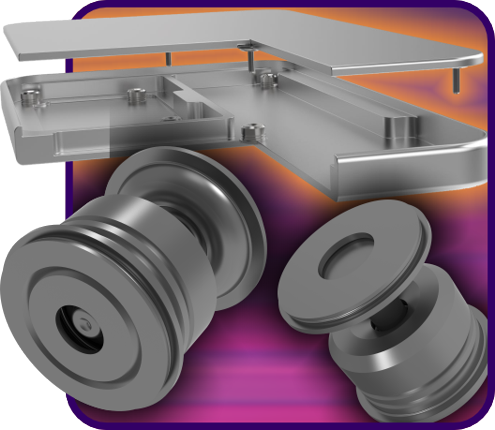This new PEM® capability produces a fully concealed fastener with zero visible evidence of position or disassembly method once engaged.
GHOST™ Fastening Technology At-a-Glance
- Near-instant release and disassembly using magnetic tool
- Ample float accommodates tolerance and assembly imprecisions
- Ultra-smooth design for sleek aesthetics
- Concealed product makes new design avenues possible across a variety of industries and market sectors
- Can replace many types of small external screw/nut assemblies
There are two floating pin styles available for the MRFS™ retainer, the MRPS™ smooth floating pin which accommodates variable engagement depth and/or tolerance stack-up and the MRHPS™ grooved floating pin which provides greater performance and decreased deflection under loading.
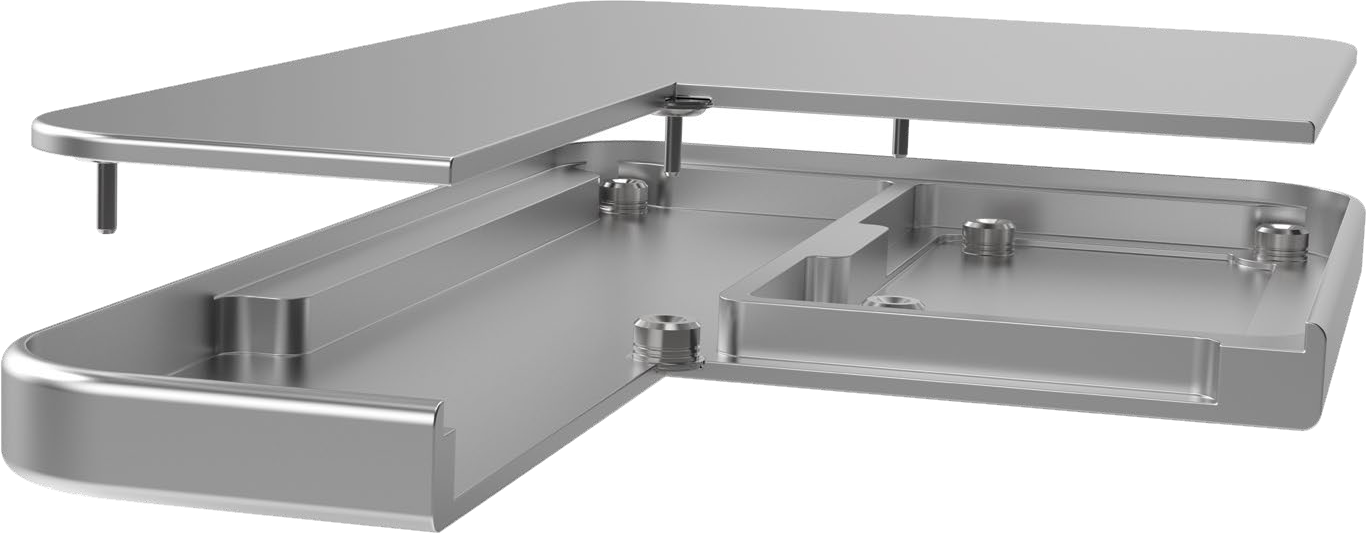
Fully enclosed device utilizing PEM® Ghost™ fasteners
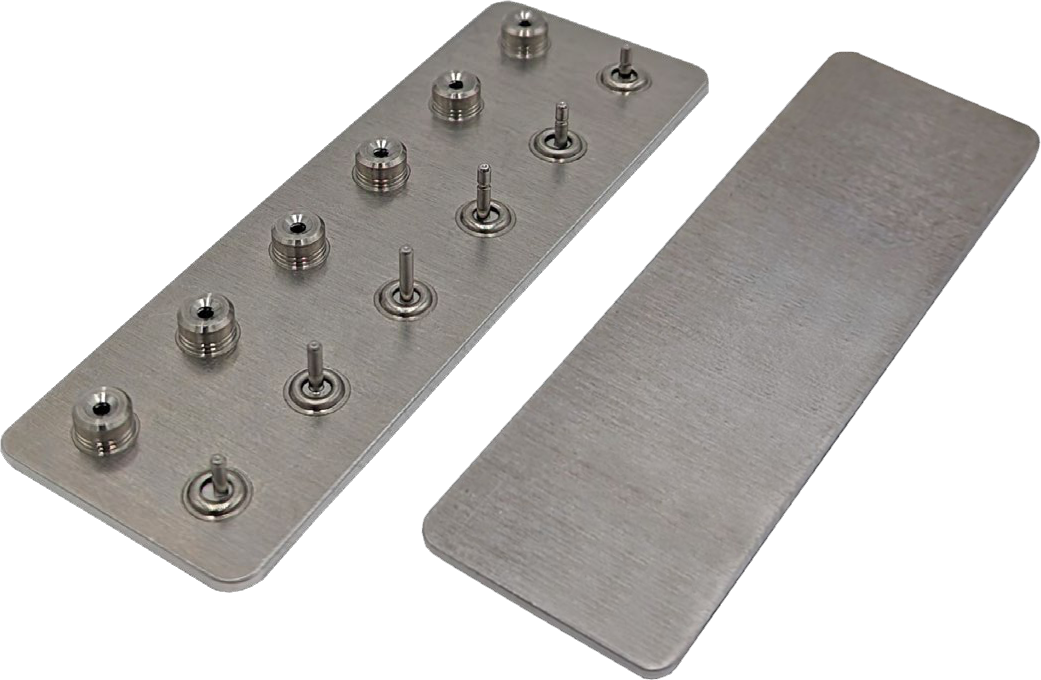
Backside of sheet remains smooth and unmarred
MRFS™ Retainer Assembly
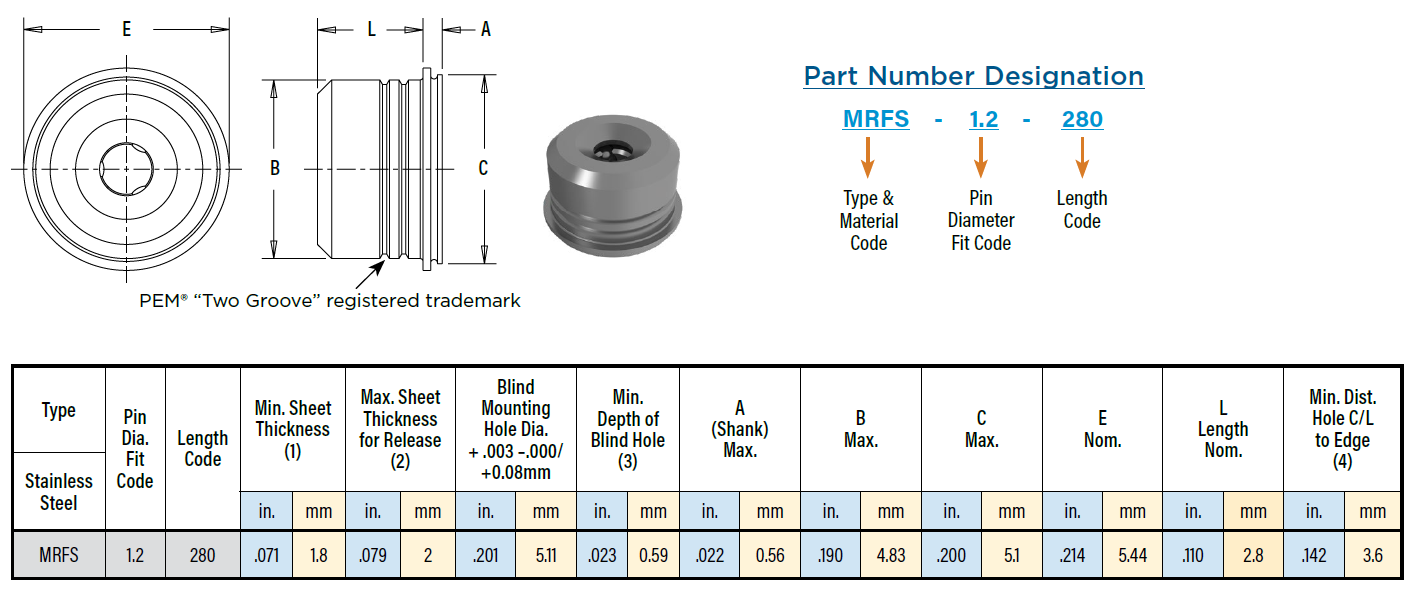
MRPS™ and MRHPS™ Floating Pins
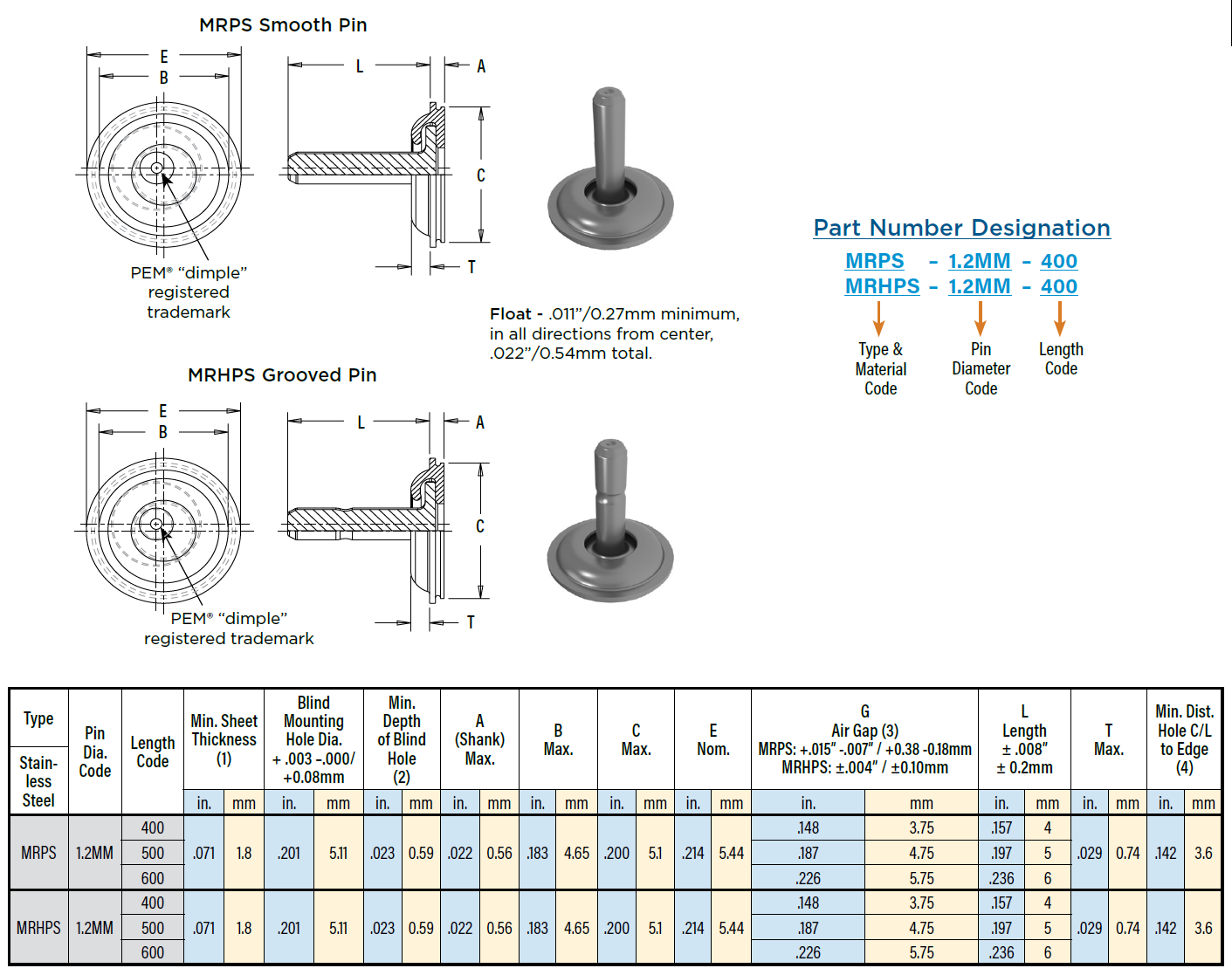
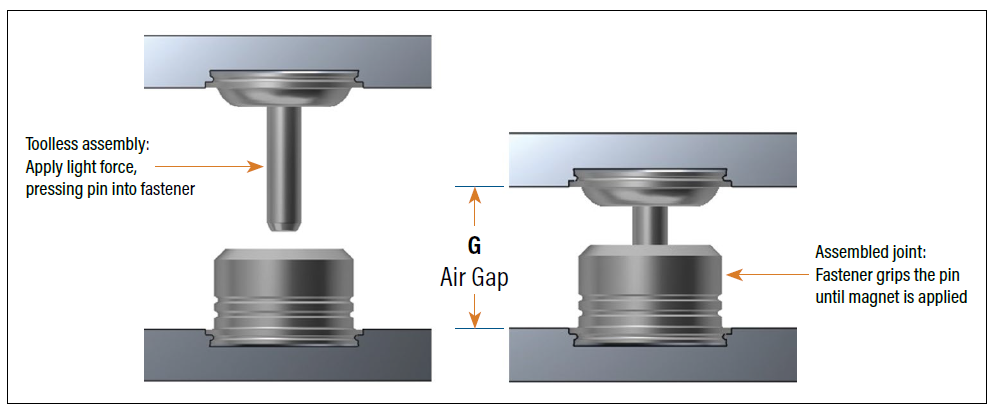
Material and Finish Specifications
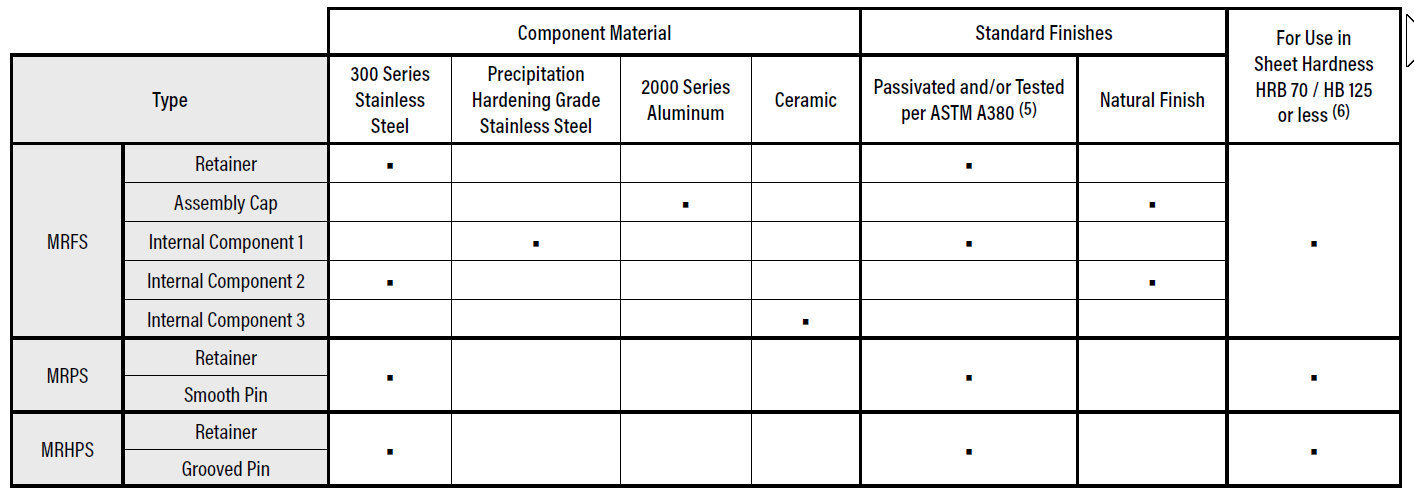
Usage & Design Guidance
Functionality
- Primary function of Ghost parts is axial retention; mated parts do not resist torque to any significant degree.
- Floating Pins are not intended to provide structural support for shear/transverse loading. If this is applied, it should be relieved prior to magnetic release.
- If the joint sees a constant load, it is recommended that this load be relieved to better facilitate magnetic release.
- There exists some amount of axial compliance in the floating pin: .006”/0.15mm NOM.
Gasketing Design & Application
- While gasketing is not technically required in all cases, it is highly recommended for the following reasons.
- Reduces radial and axial compliance in the joint.
- Magnetic release is aided by some amount of compression toward the joint; relieving of axial load.
- Some small amount of preload can be induced.
- Common gasket materials are viable, and should tend toward the soft range on the “Shore A Hardness Scale”.
- Gasket thickness will vary with application-specific considerations. A nominal thickness of 1mm is viable, and compression levels should be roughly as follows:
- 25-30% mated compression (this value should be factored into Air Gap/engagement dimension)
- 15-20% additional compression during magnetic release (do not factor into Air Gap/engagement dimension)
Structural Support
- Structural features and/or supplemental components are recommended to provide support for various types/directions of loading. (For example: shear pins, hinge points, perimeter walls).
Magnetic Release
- To facilitate effective release of mated parts:
- Relieve any shear/transverse load on the joint.
- Relieve axial load if possible; best achieved with gasket compression toward the joint.
Download the datasheet for installation information and additional details.
Video
PEM® GHOST™ Fastening Technology from PennEngineering® on Vimeo.
